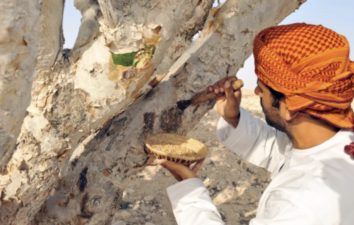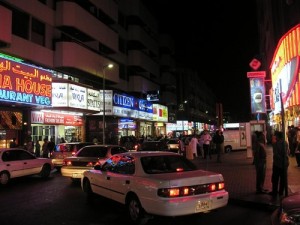 Is red tide a man-made pollutant or a natural phenomenon? Is it a plant, animal or chemical? The answer is all of the above.
Is red tide a man-made pollutant or a natural phenomenon? Is it a plant, animal or chemical? The answer is all of the above.
The United Arab Emirates Ministry of Environment and Water indicates that red tide may be present in the waters of the Gulf of Oman. As a precautionary measure, Sharjah Electricity and Water Authority (SEWA) shut down some desalinization plants in Kalba.
Red tide is caused by a population explosion in certain species of plankton. The poison these microorganisms produce is usually reddish or brown in color and is toxic to the nervous system of fish and many other vertebrates. Red tide outbreaks can cause large fish die-offs and impact other animals. A red tide in the Eastern Gulf of Mexico recently killed at least 174 endangered Florida Manatees by weakening their muscles so they could no longer lift their heads to breath. Red tide does not necessarily kill shrimp and other shellfish, but its toxin is concentrated in these animals and can be passed on to humans who consume them.
 You might first notice red tide by the rancid smell of dead fish strewn across the beach and water. The sea turns a reddish-brown and then you begin to cough and then notice that others around you are also coughing and wheezing. You might have a wonderful shellfish meal and later succumb to a poison that may require hospitalization. Red tide kills fish, damages human health and economies.
You might first notice red tide by the rancid smell of dead fish strewn across the beach and water. The sea turns a reddish-brown and then you begin to cough and then notice that others around you are also coughing and wheezing. You might have a wonderful shellfish meal and later succumb to a poison that may require hospitalization. Red tide kills fish, damages human health and economies.
I experienced the effects of a lingering red tide outbreak in the eastern Gulf of Mexico during the early 1990s. It infected my eyes and skin. Breaking waves would spray the toxin into the air, causing respiratory problems for people who lived near the sea. Friends wondered if red tide was a man-made pollutant or a natural phenomenon? Is it a plant, animal or chemical? The answer is all of the above.
Red tide is caused by living microorganisms known as dinoflagellates. These creatures sound like the invincible super monster of the sea. Like a plant they are capable of photosynthesis, but they can also move through the water, poison animals, capture prey, glow in the dark and go dormant for years before blooming back to life.
They can also reproduce and multiply into enormous numbers. The Red Sea may have taken its name from the red tide produced by a microorganism named Trichodesmium erythraeum and some scholars believe red tide fits the description of the first biblical plague in Exodus where the Nile river turned to blood.
Red tide has been a part of the ocean ecosystem for millennia, but by providing dinoflagellates with the nitrogen and phosphorus fertilizer, people have tipped the balance in favor of red tide blooms. Blooms in the Middle East seem to be associated with winter storms which blow dust from the land into the sea. Nutrients from this dust spark the population explosion which leads to the red tide.
Photo of dead fish on beach via shutterstock
Red tide image credit: Carleton College




We seek your permission to use the image for educational purposes at University of Delhi, India.
We can’t give you that permission, sorry.